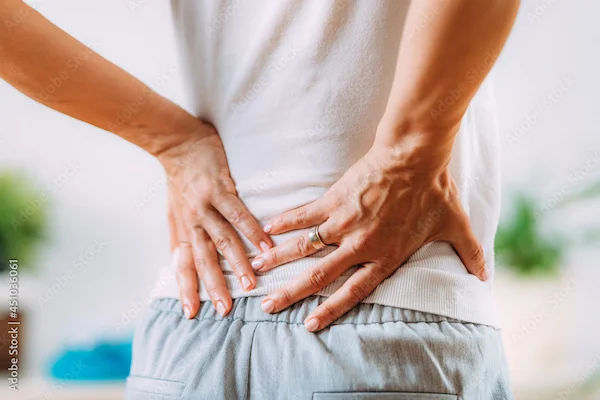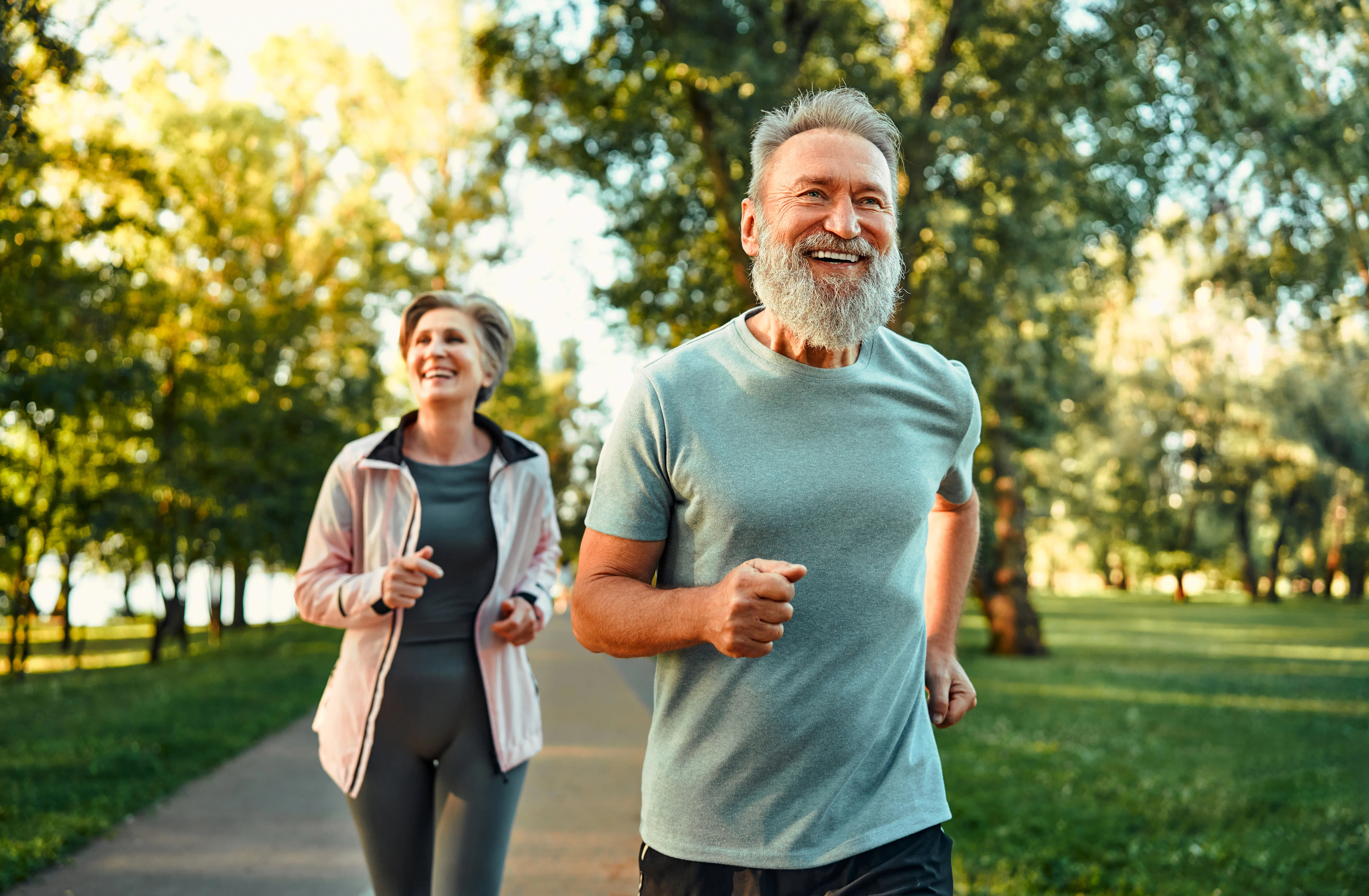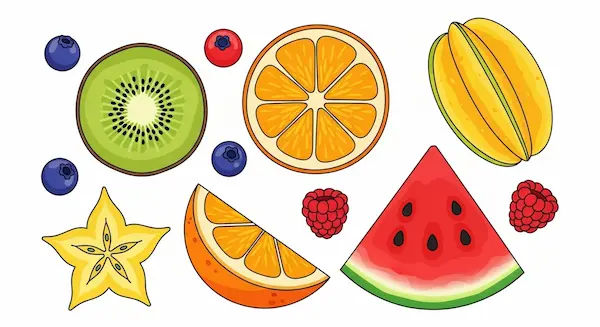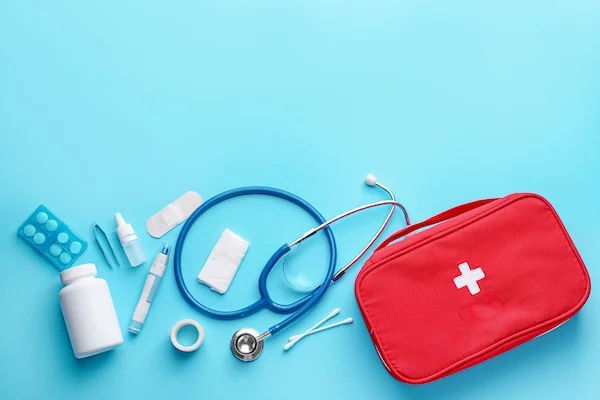What Leads To Signs Of Heat Stroke And Types
Stop heat stroke before it starts. Learn the causes, early signs, symptoms, and different types of heat stroke (classic vs. exertional) to protect yourself and others. Know when to get help.

Written by Dr. Mohammed Kamran
Reviewed by Dr. Shaik Abdul Kalam MD (Physician)
Last updated on 29th Oct, 2025

Introduction
If your city has ever felt like an oven, you already know that extreme heat isn’t just uncomfortable—it can be dangerous. Heat stroke is the most serious form of heat-related illness, and recognizing it early can save a life. In this guide, we’ll explain what heat stroke is, the warning signs to look for, and what leads to those signs inside your body. We’ll also break down the two main types of heat stroke—classic and exertional—so you can spot the difference and act quickly. Using science-backed advice from public health authorities, you’ll learn exactly what to do in an emergency, who’s most at risk, how to prevent heat stroke during heat waves, and how to plan for hotter summers ahead. Whether you’re caring for kids, supporting older adults, training outdoors, or working in high heat, this practical, step-by-step resource will help you stay safer when temperatures rise. If you remember one thing: cool first, call fast. Let’s begin.
What Is Heat Stroke?
A clear definition you can use in real life
- Heat stroke is a life-threatening emergency where the body overheats rapidly and cannot cool itself, leading to
dangerous rises in core temperature (often 40°C/104°F or higher) and central nervous system (CNS) dysfunction such
as confusion, seizures, or loss of consciousness. Without rapid cooling, heat stroke can damage the brain, heart,
kidneys, and muscles.
Two main types: classic vs. exertional
- Classic (non-exertional) heat stroke: Usually affects older adults, infants, or people with chronic illnesses during heat
waves—even indoors—especially in poorly ventilated or non–non-air-conditioned spaces. Skin may feel hot and dry,
but sweating can still occur in some cases. - Exertional heat stroke: Occurs in healthy, active people (athletes, outdoor workers, military recruits) exercising or working hard in hot, humid environments. Sweating is often profuse at first; the person can suddenly collapse with confusion or unconsciousness.
Heat exhaustion vs. heat stroke: what’s the difference?
- Heat exhaustion is a warning stage with heavy sweating, weakness, nausea, dizziness, headache, and a fast pulse. The
person is usually still awake and oriented. Heat stroke features CNS changes (confusion, fainting, seizures) and requires
immediate emergency care and rapid cooling. When in doubt, treat it as heat stroke and start aggressive cooling.
Consult a Top General Physician
What Leads to the Signs of Heat Stroke? The Science
How does your body cool itself—and why does it fails?
Your body cools mainly by sweating and evaporation. Blood vessels also widen to send more warm blood to the skin.
Problems arise when:
- It’s very humid, so sweat can’t evaporate effectively.
- You’re dehydrated, so you can’t sweat enough.
- You’re generating lots of internal heat (e.g., heavy work or exercise).
- Your body’s thermoregulation is impaired by age, illness, or medications. This mismatch causes core temperature to
rise, leading to heat stress, then heat exhaustion, and potentially heat stroke.
Heat, humidity, and the Wet-Bulb Globe Temperature (WBGT)
The heat index estimates how hot it feels by combining temperature and humidity. Wet-Bulb Globe Temperature
(WBGT) goes further by including sun, wind, and radiant heat—making it a better guide for exertion outdoors. High
WBGT means sweat can’t evaporate well, and internal heat builds faster, increasing heat stroke risk. Consider WBGT
or reliable heat apps to plan activities.
Dehydration, electrolytes, and the brain
Dehydration reduces blood volume and sweat rate. Electrolyte losses (especially sodium) can cause muscle cramps, confusion, and seizures. As core temperature rises, the blood–brain barrier and brain function are compromised, producing hallmark heat stroke signs: confusion, irritability, staggering, or collapse.
Medications and medical conditions that raise risk
Drugs that impair heat loss or hydration—diuretics, anticholinergics, some antihistamines, beta-blockers, certain psychiatric medicines—can increase risk. Alcohol and stimulants (including some illicit drugs) worsen dehydration and heat generation. Chronic conditions like heart disease, kidney disease, diabetes, obesity, and poor mobility increase vulnerability.
Early Warning Signs and Red Flags
Mild, moderate, and emergency-level symptoms
- Early/mild (heat stress): Thirst, fatigue, mild cramps, headache.
- Moderate (heat exhaustion): Heavy sweating, cool clammy skin, dizziness, nausea/vomiting, weakness, fast heartbeat.
- Emergency (heat stroke): High body temperature, hot skin (sweaty or dry), confusion, agitation, slurred speech,
seizures, fainting, severe nausea/vomiting, very fast pulse and breathing.
CNS changes: confusion, seizures, fainting
- Central nervous system symptoms distinguish heat stroke from heat exhaustion. If a person shows confusion,
disorientation, loss of balance, seizure, or loss of consciousness after heat exposure or exertion, treat it as heat stroke
and begin rapid cooling immediately while calling emergency services.
Signs in children and older adults
- Infants/children: Flushed skin, fussiness or lethargy, poor feeding, vomiting, unusually fast breathing. Children heat up faster than adults.
- Older adults: Less thirst, reduced sweating, confusion, and dizziness. Just one fan may not be enough in very hot,
humid rooms; air conditioning or cool spaces are safer.
Who Is Most at Risk and Common Triggers?
Age extremes, pregnancy, and chronic diseases
Older adults, infants, pregnant people, and those with heart, kidney, or endocrine disorders face a higher risk due to
impaired thermoregulation, medications, or reduced mobility. People with obesity or a history of heat illness are also
more susceptible.
Workers and athletes: heat load and exertion
Outdoor workers (construction, agriculture), delivery staff, and athletes face high “heat load” from exertion, gear (e.g.,
PPE or sports equipment), and sun exposure. Insufficient rest breaks, inadequate hydration, and lack of acclimatization
can quickly lead to exertional heat stroke.
Urban heat islands, heat waves, and indoor risks
Cities trap heat (urban heat islands). During heat waves, indoor temperatures can remain dangerously high—especially
without AC. Risks rise at night when homes don’t cool down. Older apartment buildings and top-floor units can be
particularly hazardous.
Triggers: travel, fasting, alcohol/drugs, power outages
Heat risks spike when routines change—travel from a cool climate to a hot one, fasting without hydration planning,
alcohol (diuretic), recreational stimulants, or power outages that disable fans/AC. Plan hydration, shade, and cooling
breaks accordingly.
Immediate First Aid: Cool First, Call Fast
The “cool-first” principle and best cooling methods
- For suspected heat stroke: start rapid cooling immediately while contacting your local emergency number. Best
methods (use what’s available): - Cold water immersion (full-body ice/water bath) is most effective for exertional heat stroke—cooling is faster and
improves outcomes. - If immersion is unavailable: cold shower; douse with cool water and fan aggressively; place ice packs at neck, armpits, and groin; remove excess clothing; move to shade or AC.
- Keep cooling until the person improves or professionals take over.
What NOT to do (common mistakes)?
- Don’t delay cooling while “waiting to see.” Minutes matter.
- Don’t give fluids to someone with altered consciousness (choking risk).
- Don’t rely on just a fan in extreme heat and high humidity; combine with water mist or move to AC.
- Avoid alcohol rubs or very tight cold packs that reduce skin blood flow.
When to call emergency services?
If there’s confusion, fainting, seizures, a high temperature, or severe vomiting—call immediately. For heat exhaustion
symptoms that don’t improve within an hour of cooling and hydration, seek urgent evaluation. If you or a loved one
has lingering symptoms after heat exposure, consult a doctor online with Apollo 24|7 for further evaluation and safety advice.
Medical Care, Diagnosis, and Recovery
How doctors diagnose heat stroke (what to expect)?
In the hospital, clinicians assess vital signs, mental status, and core temperature. They may order labs to check
electrolytes, kidney function, liver enzymes, muscle breakdown (CK), and clotting. Treatment emphasizes rapid
cooling, IV fluids, and managing complications such as electrolyte disturbances or rhabdomyolysis. If lab checks are
advised after recovery (e.g., kidney function, electrolytes), Apollo 24|7 offers a convenient home collection for tests.
Complications to watch for
Potential complications include acute kidney injury, liver dysfunction, rhabdomyolysis (muscle breakdown), heart
rhythm problems, and neurological deficits if cooling is delayed. Early recognition and rapid cooling reduce these risks.
Recovery timeline, follow-up, and when to see a doctor
Recovery varies. Some people feel fatigued, dizzy, or heat-intolerant for days to weeks. Avoid strenuous exercise until
cleared by a clinician. If your condition does not improve after trying rest and cooling, or if symptoms persist beyond
two weeks, consult a doctor online with Apollo 24|7 or book a physical visit for follow-up.
Prevention That Works: Everyday to Extreme Heat
Hydration strategies and “pee test” for hydration
Drink regularly; don’t wait for thirst. During heavy activity in heat, consider small, frequent sips plus electrolytes if
sweating heavily. A simple check: pale yellow urine suggests better hydration; dark yellow suggests you need more
fluids. Long-tail keywords: hydration tips for hot weather; heat illness recovery timeline.
Heat acclimatization (for workers and athletes)
Gradually increase heat exposure and intensity over 1–2 weeks. Build in rest breaks, start earlier in the day, and
monitor for early signs of heat stress. Employers should implement acclimatization schedules and buddy systems.
Clothing, shade, and cooling hacks
Wear lightweight, light-colored, loose clothing and a breathable hat; use sunscreen to prevent sunburn (which impairs
cooling). Pre-cool with a cold drink or slushy before exertion, use cooling towels, and take frequent shaded or air-
conditioned breaks. Forearm immersion in cool water can help lower body temperature during breaks.
Using heat index/WBGT apps and planning your day
Plan outdoor work or exercise during cooler hours; reduce intensity on high heat index/WBGT days. Take more
frequent breaks and shorten sessions as humidity rises. Know your personal limits and adjust.
Myths vs. Facts
Fans in extreme heat, alcohol/caffeine, salt tablets
- Fans: In very high heat and humidity, fans alone may not prevent heat-related illness. Combine with water mist, cold
packs, or move to air conditioning. - Alcohol/caffeine: Alcohol dehydrates and impairs judgment. Moderate caffeine is generally safe, but it does not replace
water intake. - Salt tablets: Not routinely recommended; can cause nausea or electrolyte imbalance. Use balanced electrolytes if
needed, especially during prolonged heavy sweating.
Dark vs. light clothing and sunscreen myths
Light-colored, loose, breathable fabrics help. Sunscreen protects against sunburn but doesn’t reduce heat load directly—
still essential to maintain skin health and preserve evaporative cooling.
Planning for Heat Waves and a Warming Climate
Home prep: cool rooms, power plans, med checks
Identify the coolest room in your home; use blackout curtains during the day and ventilate at night if the air is cooler.
Keep a backup plan for power outages (battery fans with water mist, community cooling centers). Review medications
with a clinician if they affect heat tolerance.
Community options: cooling centers and buddy systems
Know where local cooling centers are. Check in on older neighbors or relatives twice daily during heat waves. If you
manage teams or community groups, set up a buddy system and share a simple checklist for early heat stress signs.
Conclusion
Heat stroke can develop quickly, but with the right knowledge and a plan, most cases are preventable. Remember the core principles: recognize early warning signs, understand how heat and humidity strain your body, and respond decisively if confusion, fainting, or seizures occur—cool first and call for help. Protect those at highest risk by checking in regularly during heat waves, setting up cool spaces, and avoiding strenuous activity during the hottest hours. Workers and athletes should build heat acclimatization gradually, schedule smart breaks, and use hydration and cooling strategies from the start of their day. At home, prepare for hot periods with curtains, fans, plus misting, and a backup plan for power outages; know where nearby cooling centers are. If you’ve had heat exhaustion or heat stroke, take recovery seriously. Rest, rehydrate, and follow medical guidance—complications can be avoided with timely care. If symptoms persist beyond a few days or you’re unsure about returning to activity, consult a doctor online with Apollo 24|7 or book a clinic visit for personalized advice. With small, consistent steps and a bit of planning, you can stay safe, active, and resilient—even when the heat is on.
Consult a Top General Physician
Consult a Top General Physician

Dr. Mohamed Azeem
General Physician/ Internal Medicine Specialist
2 Years • MBBS,MD(Internal Medicine) CCEBDM
Karaikudi
Apollo Hospitals Karaikudi, Karaikudi

Dr. Vishal Kumar H
General Physician/ Internal Medicine Specialist
8 Years • MBBS, master class in critical care medicine, Advanced Post Graduate Diploma in Non Invasive Cardiology, certificate course in Cardiovascular Disease & Stroke, Certificate course in Common Mental Disorder
Bengaluru
Apollo Clinic, Basavanagudi, Bengaluru

Dr. Mijanur Rahaman Mondal
General Practitioner
3 Years • MBBS
Kolkata
Dr Utsa Basu Clinic, Kolkata
(25+ Patients)

Dr. Abhishek Ranjan
General Practitioner
4 Years • MBBS
Kolkata
VDC Clinic, Kolkata

Dr. Soumen Paul
General Physician/ Internal Medicine Specialist
24 Years • MBBS
Kolkata
MCR SUPER SPECIALITY POLY CLINIC & PATHOLOGY, Kolkata
(25+ Patients)
Consult a Top General Physician

Dr. Mohamed Azeem
General Physician/ Internal Medicine Specialist
2 Years • MBBS,MD(Internal Medicine) CCEBDM
Karaikudi
Apollo Hospitals Karaikudi, Karaikudi

Dr. Vishal Kumar H
General Physician/ Internal Medicine Specialist
8 Years • MBBS, master class in critical care medicine, Advanced Post Graduate Diploma in Non Invasive Cardiology, certificate course in Cardiovascular Disease & Stroke, Certificate course in Common Mental Disorder
Bengaluru
Apollo Clinic, Basavanagudi, Bengaluru

Dr. Mijanur Rahaman Mondal
General Practitioner
3 Years • MBBS
Kolkata
Dr Utsa Basu Clinic, Kolkata
(25+ Patients)

Dr. Abhishek Ranjan
General Practitioner
4 Years • MBBS
Kolkata
VDC Clinic, Kolkata

Dr. Soumen Paul
General Physician/ Internal Medicine Specialist
24 Years • MBBS
Kolkata
MCR SUPER SPECIALITY POLY CLINIC & PATHOLOGY, Kolkata
(25+ Patients)
More articles from General Medical Consultation
Frequently Asked Questions
1) What are the earliest signs of heat stroke to watch for?
Early signs include confusion, disorientation, slurred speech, or fainting after heat exposure. If these appear, treat them as heat stroke immediately. For less severe heat exhaustion, watch for heavy sweating, dizziness, and nausea.
2) How fast can heat stroke happen during exercise?
It can develop within minutes in hot, humid conditions—especially without acclimatization. Use scheduled cooling breaks and hydration, and reduce intensity on high heat index/WBGT days.
3) Is a fan enough to prevent heat stroke during a heat wave?
Not always. In very hot, humid environments, a fan alone may be inadequate. Combine a fan with cool water misting or move to an air-conditioned space for safer cooling.
4) Which medications can increase heat stroke risk?
Diuretics, anticholinergics, some antihistamines, beta-blockers, and certain psychiatric medications can impair heat tolerance. Review your list with a clinician before heat season.
5) When should I see a doctor after a heat illness?
If symptoms don’t improve within 24–48 hours, if you have had confusion or fainting, or if you have chronic conditions, consult a doctor online with Apollo 24|7. Follow-up tests (e.g., electrolytes, kidney function) may be recommended; Apollo 24|7 offers home collection for labs if advised.




